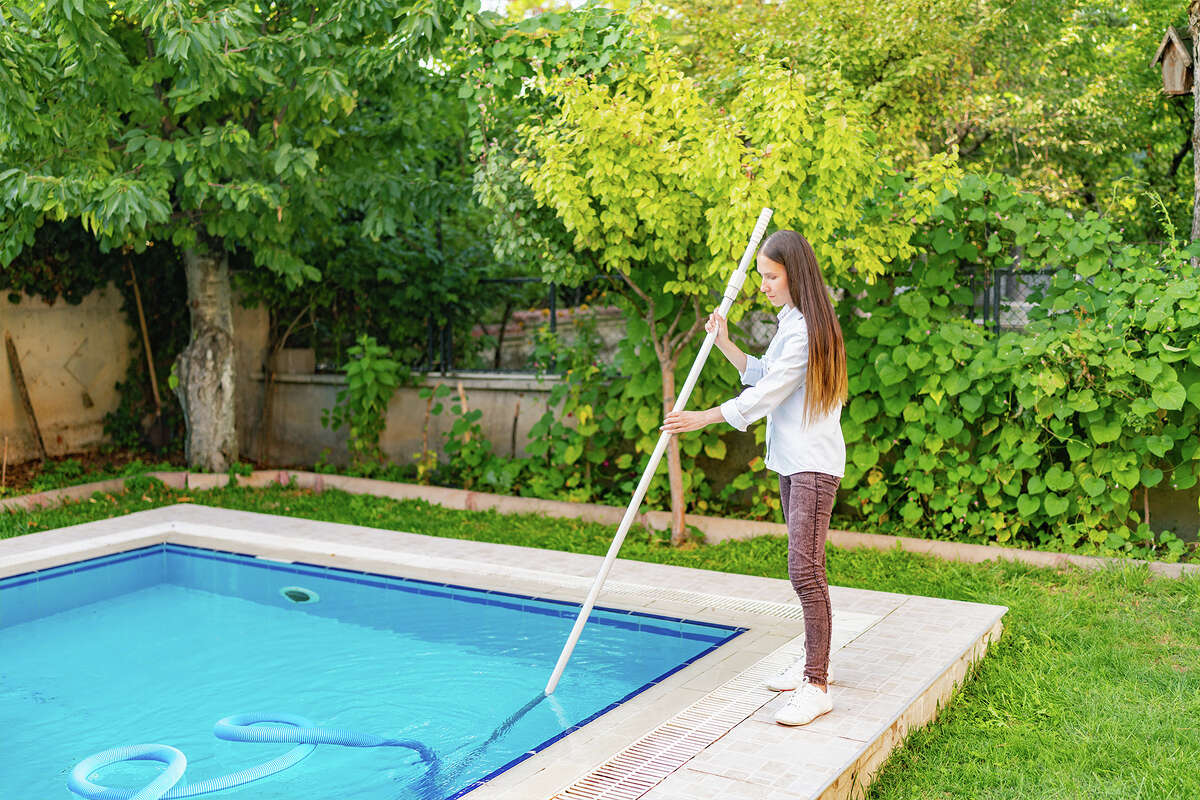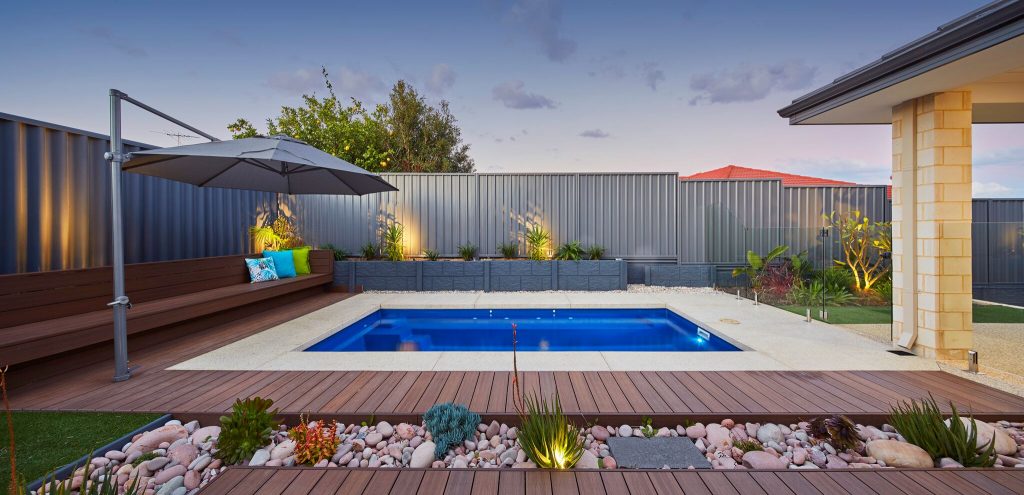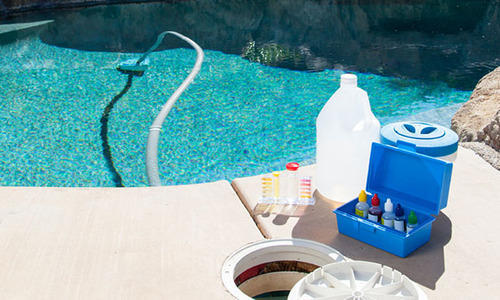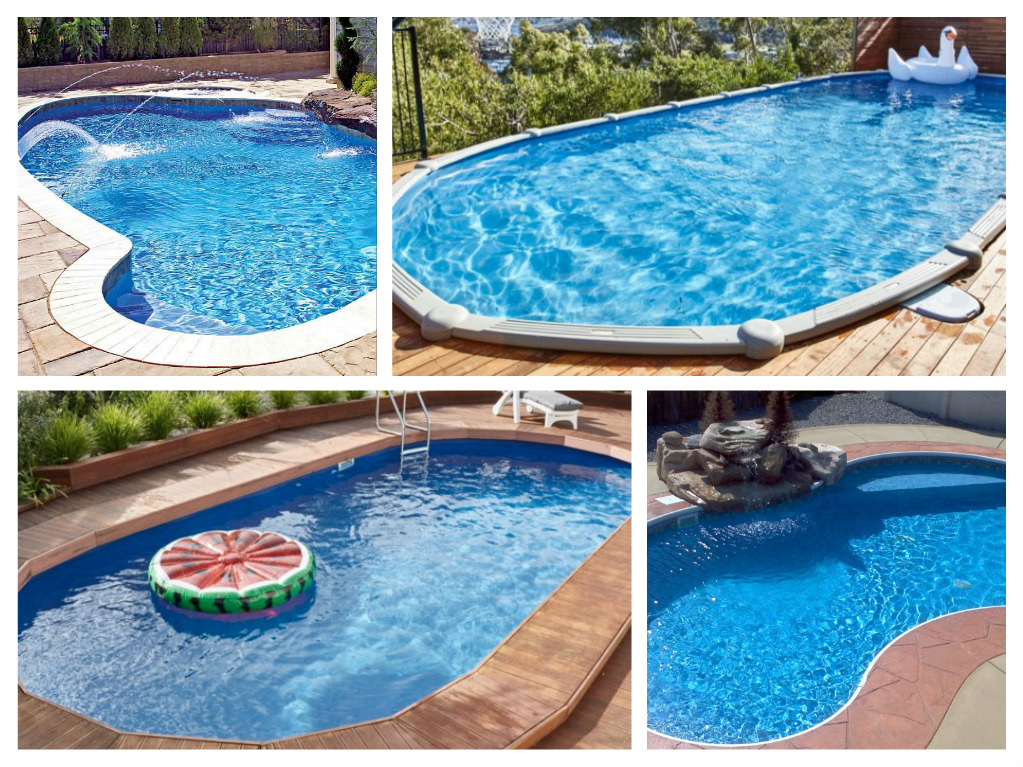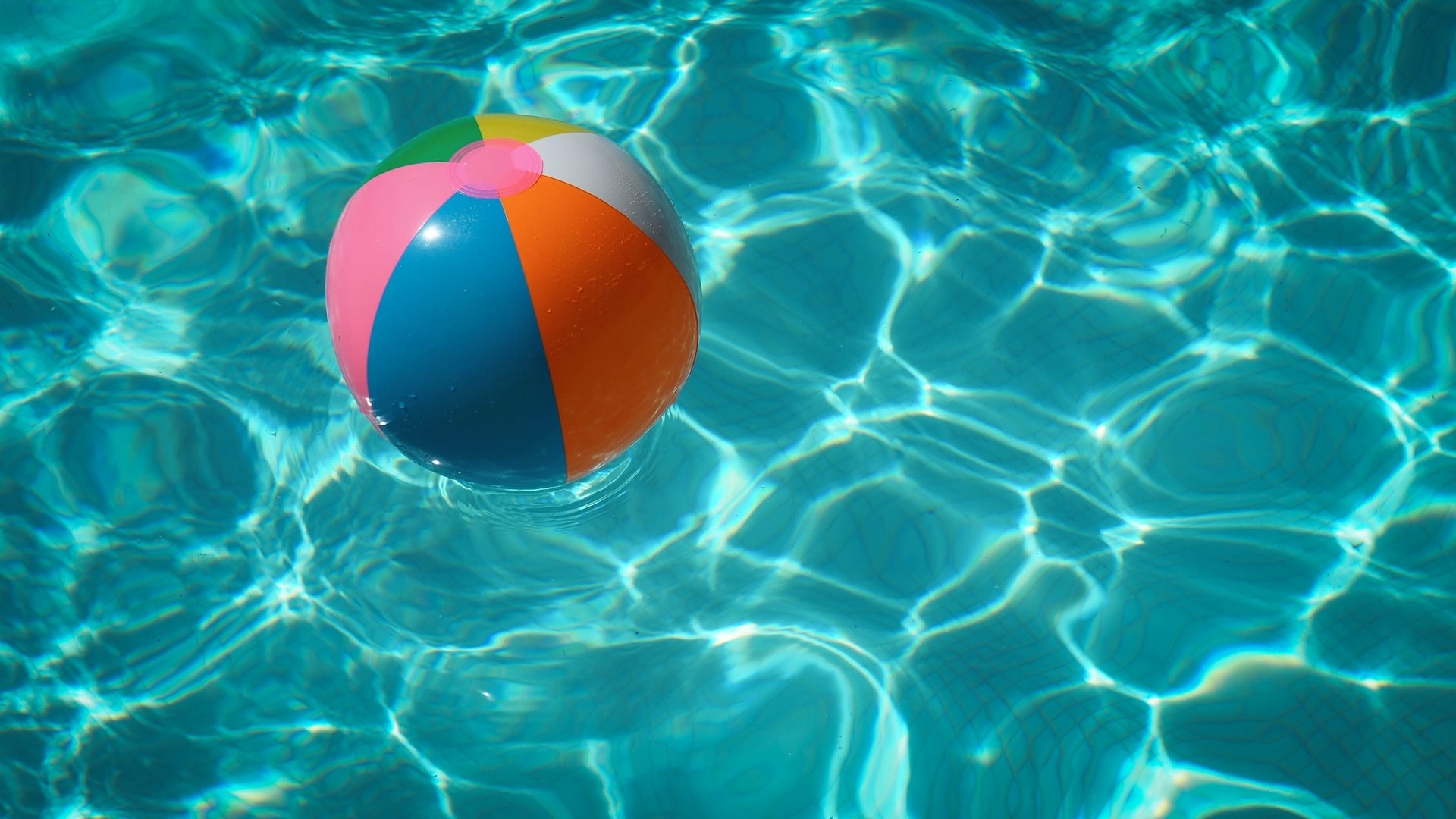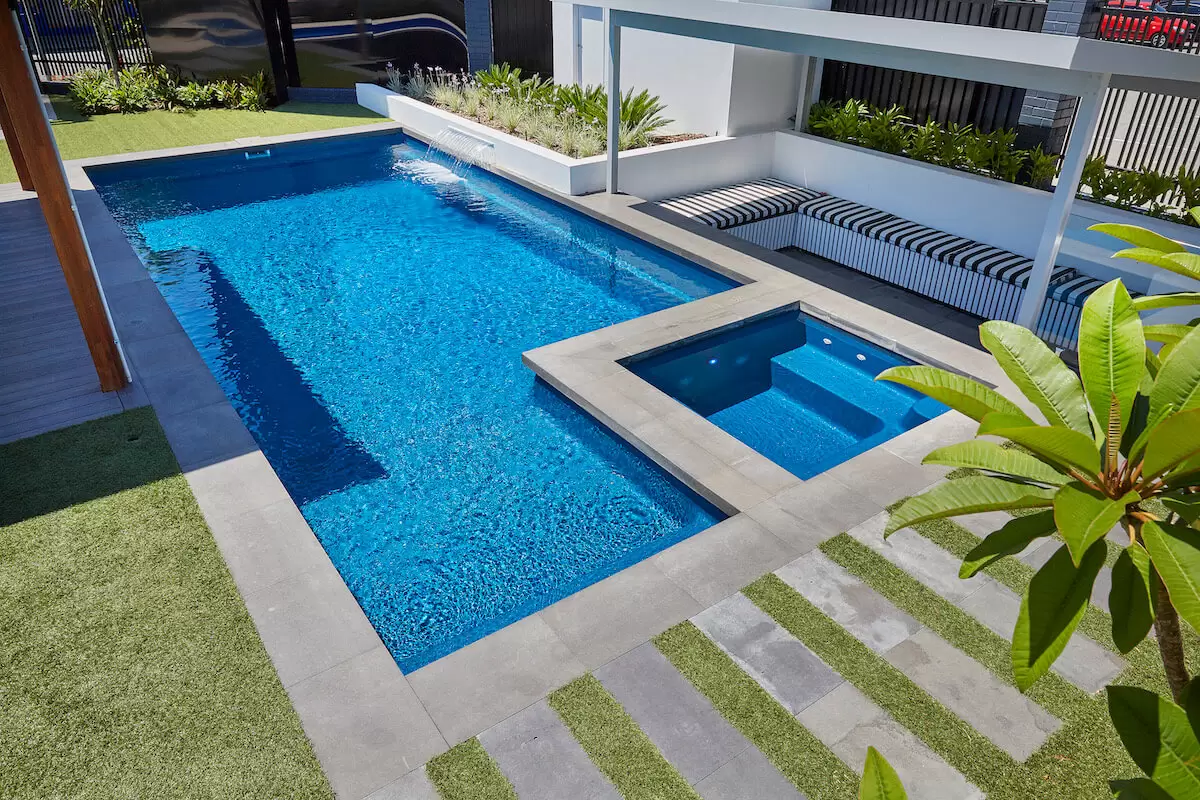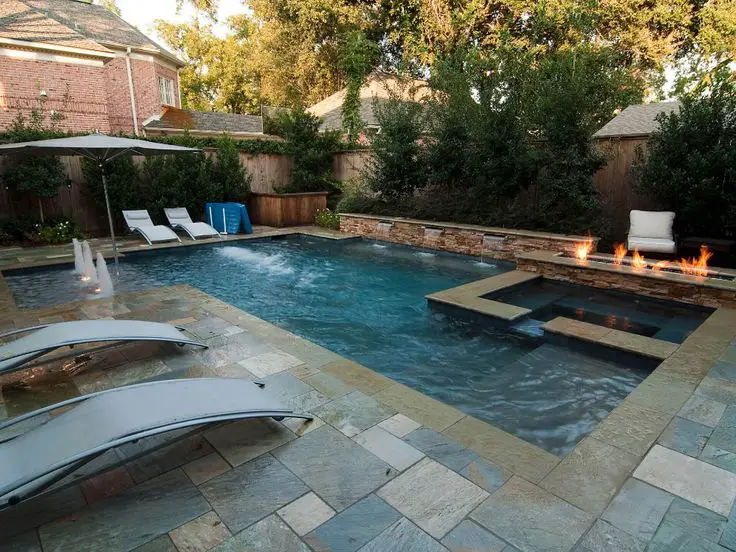If you’re having a problem with pool algae, you’re not alone. Green pool algae are among the most common swimming pool challenges, along with the stubborn black algae and mustard algae.
Worse still, failure to deal with pool algae quickly can cause pool degradation necessitating expensive repairs down the line. In fact, prolonged algae attacks can cause permanent swimming pool staining, forcing you to replace the pool material.
Remember that pool algae can also affect the swimmers. It makes the pool slippery, increasing the risk of accidents, bruises, and cuts. Read on to understand ways to identify the different algae types and how to treat algae in a pool.
What are Pool Algae?
Algae is a small plant-like organism that grows in pool water. It’s a non-flowing plant with chlorophyll but lacks true stems, roots, leaves, or vascular tissue.
Types of Algae
There are dozens of algae types, from Euglenoids to golden-brown algae and fire algae. However, the three main algae types in swimming pools are green pool algae, yellow pool algae, and black algae.
Green algae
Green algae are the most common algae type found in swimming pools. Also known as Chlorophyta, it mostly occurs in freshwater environments, though a few grow in ocean environments. Green algae contain chloroplasts and undergo photosynthesis. Types of green algae include horsehair algae, sea lettuce, and dead man’s fingers.
Yellow algae
Yellow algae are the least prolific but still boast 450 to 650 species. They are single-cell organisms with cell walls made of cellulose and silica. They are yellow (or yellow-green) because their chlorophyll lacks certain pigments. Yellow-green algae also love freshwater but thrive in saltwater bodies and wet soil environments.
Black algae
Black algae are also single-celled organisms. They grow in vast colonies and contain chlorophyll. However, they also contain other compounds that ask the green chlorophyll. It typically forms in crevices and cracks on pool surfaces, especially in plaster-finished pools. Black algae are one of the most prolific algae types because it forms a protective layer on the outside of the cell that makes it extremely difficult to damage or kill. For instance, it’s incredibly resistant to standard chlorine levels.
Causes of Pool Algae
If you’re wondering why you have algae in your pool, the reasons are many and varied. Sanitizing your pool with chemicals, such as chlorine, is the main cause. Interestingly, this can happen even if you use the correct chlorine levels.
Another common reason is lack of or not enough treatment. Algae especially love high-pH (slightly acidic) environments. However, it can also occur in alkaline environments. So, yes, algae can grow in almost any pool condition. It’s one of the reasons that make it extremely difficult to control.
How to Treat Algae in a Pool
Removing algae from a pool depends on many factors, involves many components, and may take several days. Anyway, here’s how to treat algae in a pool with the least effort;
Double-check your pool
Check the sanitation, filtration, and circulation systems. You want to make sure that everything is working normally. For instance, check the pool’s chemistry to make sure it’s between 7.2 and 7.7 pH alkaline. Also, adjust the valves and let the water run for 24 hours.
Shake up the algae
Get a stiff-bristled brush and thoroughly scrub the pool’s walls to loosen up the algae. Then, vacuum it manually to remove the waste.
Shock the pool
Apply flocculent and shock the pool vigorously to remove the suspended algae. You need a significant amount of shock, typically 2-5 kg per 10,000 gallons of pool water, as you’re aiming for 30 parts-per-million of chlorine. You’ll know you have enough shock If the pool water turns blue/grey.
Add algaecide
Make sure the chlorine level is below 5ppm before adding algaecide. If so, add algaecide to the pool and brush the sides of the pool vigorously once more. Then, let it settle and vacuum it. Feel free to add a clarifier. Once done, test the pool again and balance your chemicals.
Repeat the process
If there are still traces of algae in the pool, repeat steps 1-4, scrubbing the pool vigorously each time, to tear up the algae. Black algae can be particularly stubborn. So, be prepared to scrub more than once. You may even want to let the algaecide settle overnight.
How to Prevent Algae
Tired of waiting to scrub out algae from your swimming pool? You can prevent algae growth altogether by following the tips below;
- Test and balance your pool water at least once a week.
- Test and balance your pool water after every heavy use and rainstorm.
- Shock the pool at least once a week during peak season.
- Clean or backwash the pool filter regularly, even daily, during high season.
- Run the pump 8-12 hours per day to circulate the water.
- Ask everyone to wash and sanitize their swimwear after every session.
- Wash and sanitize pool equipment, floats, and toys after every session
- Add flocculant or algaecide as soon as you pick up signs of algae growth.
Summary
That’s all. You now know how to treat algae in a pool and ways to prevent algae altogether. Remember that algae can be very stubborn, though. So, you must also be very persistent in your efforts.
